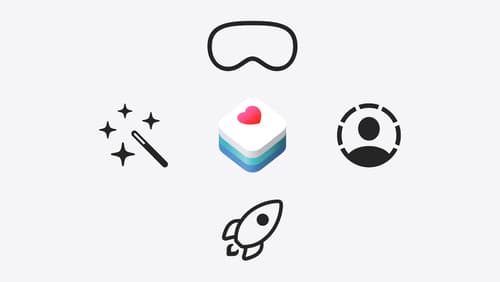\vision pro and accessibility
Asked on 2024-07-31
1 search
Apple Vision Pro and visionOS have introduced several features and updates that enhance accessibility and user experience. Here are some key points related to accessibility:
-
Immersive Spaces: Vision Pro allows users to enter immersive spaces where other apps are hidden, and the surrounding pass-through dims to provide a sense of separation from the workspace. This can help users focus and reflect without distractions. For example, users can reflect on their latest calendar event through a colorful immersive experience and save their reflections to HealthKit (Get started with HealthKit in visionOS).
-
Interaction with Eyes, Hands, and Voice: Vision Pro supports interaction using eyes, hands, and voice, which can be particularly beneficial for users with different accessibility needs. This includes the ability to inspect web content and use WebXR for immersive experiences (Optimize for the spatial web).
-
Privacy in Interaction: Vision Pro ensures user privacy by keeping the details of where a user is looking private. Highlights are drawn by a process outside of Safari, ensuring that even the browser does not know where the user is looking (Optimize for the spatial web).
-
Comfortable Design: Vision Pro apps are designed to require minimal physical movement, making them accessible to a wider range of users. For example, in the game Super Fruit Ninja, the play area has a geometric guide to encourage players to stay within a boundary, ensuring that movement is not needed (Design great visionOS apps).
-
Guest User Feature: Vision Pro includes a guest user feature that allows others to set up and try out the device while preserving the owner's data and privacy. This feature can be useful for accessibility testing and ensuring that the device can be used by different individuals (Get started with HealthKit in visionOS).
These features highlight Apple's commitment to making Vision Pro and visionOS accessible and user-friendly for a diverse range of users.

Platforms State of the Union
Discover the newest advancements on Apple platforms.

Design great visionOS apps
Find out how to create compelling spatial computing apps by embracing immersion, designing for eyes and hands, and taking advantage of depth, scale, and space. We’ll share several examples of great visionOS apps and explore how their designers approached creating new experiences for the platform.

Get started with HealthKit in visionOS
Discover how to use HealthKit to create experiences that take full advantage of the spatial canvas. Learn the capabilities of HealthKit on the platform, find out how to bring an existing iPadOS app to visionOS, and explore the special considerations governing HealthKit during a Guest User session. You’ll also learn ways to use SwiftUI, Swift Charts, and Swift concurrency to craft innovative experiences with HealthKit.
